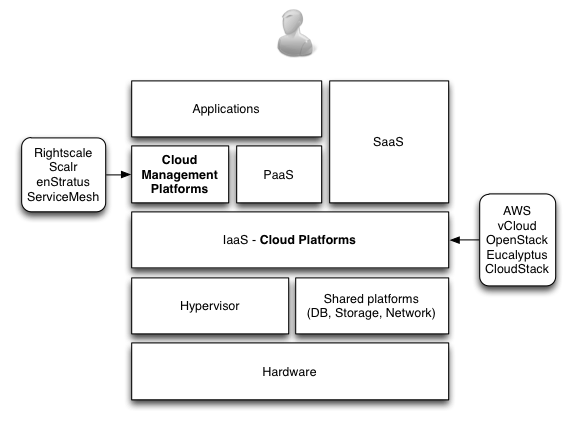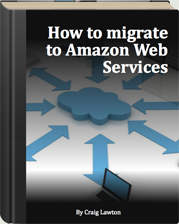The Cloud keeps diversifying. New offerings come on the market each month. IaaS vendors innovate and create new services to help their customers (and if it also locks them in that’s okay too).
That said there is a core set of capabilities everyone looks for in an IaaS cloud. You may want to build an Ubuntu image with a particular number of vCPUs and memory. You don’t really want to concern yourself with the cloud server types that a vendor like Rackspace or AWS provides.
You don’t want to specialise in understanding the API of every cloud vendor when configuring your continuous deployment tools either.
You just want a server, operating system and some software that you can move between clouds. You’d love it if cloud providers agreed on some standards. If only.
Cloud management platforms – like RightScale (Ed: corrected) or Scalr -manage this disconnect.
Most cloud management solutions are aligning their security models, virtual networking and API strategy with AWS. They aim to provide their customers with the ability to migrate workloads between owned and non-owned clouds. They are both open source and proprietary.
Cloud management platforms represent both an immediate necessity for managing complexity and also an opportunity to start building sophisticated IT operations management platforms that allow better planning for the IT function, an ERP for IT if you like.
The following diagram shows where Cloud Management platforms reside in the Cloud stack (as distinct from Cloud platforms).

It’s important to understand the difference between a Cloud Management platform (managing lack of standards between clouds) and a Cloud platform (turning your hypervisor and other shared resources into a private cloud)
For your cloud management platform to perform its function of integrating with your private cloud it needs to integrate with your internal cloud platform. Most organisations have created their private cloud by taking their existing investment in virtualisation and adding a cloud platform tier.
The expected features of a Cloud Management platform are:
- Public/Private Cloud integration
- Manage Compute, Store and Networking consistently.
- Metering – The ability to track usage and apportion costs.
- Templates – to support quick provisioning
- APIs – to enable integration of other business systems such as billing systems and CRM. Integration with configuration management platforms such as Chef and Puppet to describe infrastructure in code.
- Role-based access – d’uh.
There is a lot of confusion about terminology. This is partly because of the rapidly changing market and also because vendors are developing solutions that overlap different areas. Maybe they are trying to confuse us on purpose! Terms such as Cloud Brokers and Cloud Infrastructure Management are bandied about.
What is your Cloud Management strategy? Do you need one? Or are you picking a single vendor to keep it all simple?



3 Comments